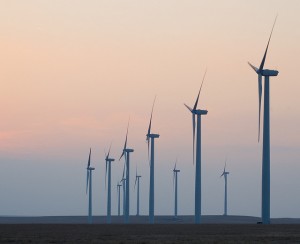
By Liz Pacheco
Green roofs, solar panels and a native plant garden are among the green initiatives Grand Rapids Community College in Michigan and Wilbur Wright College in Chicago are taking to become more efficient and environmentally friendly. These changes are happening in classrooms too, with curriculums redesigned to provide green job training.
Building off the efforts of these and other community colleges, the organizations Jobs for the Future and the National Wildlife Federation have created the Greenforce Initiative. It’s a two-year program to develop and enhance green job pathways and programs in six regions of the nation.
The objective is to support green job programs not through direct green job training, but with funding and communication networks for participating schools.
While campus-wide greening is encouraged, the career programs are at the core of the effort. They target lower-skilled adults and non-traditional students, teaching them the skills needed to get green jobs, said Gloria Mwase, the program’s director and Jobs for the Future affiliate. For many schools these jobs will start by greening their own campuses.
“Some [schools] might be able to put up a wind turbine and do wind training [on campus],” said Juliana Goodlaw-Morris, who works with the National Wildlife Federation and is the campus field manager for Illinois and Michigan. “Others might have to access something outside of campus to make it work…everyone is taking a different focus.”
Funded by Bank of America Charitable Foundation, the Greenforce Initiative is planned for North Carolina, Seattle, Northern Virginia and Southern Texas; Metro Chicago and Michigan are the only regions from the Great Lakes area.
These six regions were chosen for their access to community college campuses interested in or already working on ways to offer green job training and promote campus greening. Regions with a need for green jobs were especially sought, Mwase said.
“We wanted to be sure that we weren’t encouraging colleges to train participants for jobs that do not exist,” she said.
Michigan and Illinois are ideal participants.
Both states’ unemployment rates are among the highest in the nation. In the Department of Labor’s Sept. 21, 2010 report, Illinois’s was 10.1 percent and Michigan’s 13.4 percent, the second highest in the country. Additionally, the Michigan Green Jobs Report 2009 recorded 109,067 total green jobs available in the state, a number that is only expected to rise thanks to emerging opportunities in the private sector.
In Michigan, the Greenforce Initiative is further funded with a grant from the Charles Stewart Mott Foundation. The program is collaborating with the Michigan Community College Association and their Alternative Energy Consortium and Breaking Through Network.
A similar partnership will be made in the Metro Chicago region with the Illinois Green Economy Network. Its members include all 48 community colleges in the state.
“[The program] is really going to be focused on each campus networking and using best practice sharing–creating a community and cohort of schools that can come together,” said Goodlaw-Morris.
Blogs, Twitter, webinars, conference calls and face-to-face meetings will be used to network. Some schools have already connected. Much of Greenforce’s work will be helping to further expand and strengthen their efforts.
Schools like Wilbur Wright will be a model for other schools in their region, said Victoria Cooper, Director of Environmental Technology at Wilbur Wright.
“[The Greeforce Initiative] respects our work and leadership in this area and we’re helping them approach other institutions,” said Cooper. “We fit very comfortably in the Greenforce set of objectives.”
At Wilbur Wright, students can join the building energy technology program and help retrofit campus buildings. They can be part of the culinary program where a green roof is used for learning how to cook and grow food.
Grand Rapids culinary students also have a green roof. Students there can earn a windmill safety certificate for windmill technicians and participate in a green remodeling program.
Similar to Greenforce Initiative, the SEED Center recently announced a nationwide project with more than 300 community colleges to encourage and develop green job training. Grand Rapids is part of that project as well.
While for right now Greenforce Initiative’s funding is only enough for two-years, the impacts are expected to persist much longer.
“We hope that lessons learned from this initiative will become infused in the college and change the way the institution itself approaches the engagement of and support for lower-skilled adults, ” Mwase said.
For information about the Greenforce Initiative and the work in each region visit: http://www.nwf.org/greenforceinitiative/index.html
Pingback: GRCC in the News: 11/23/10 « GRCC Today